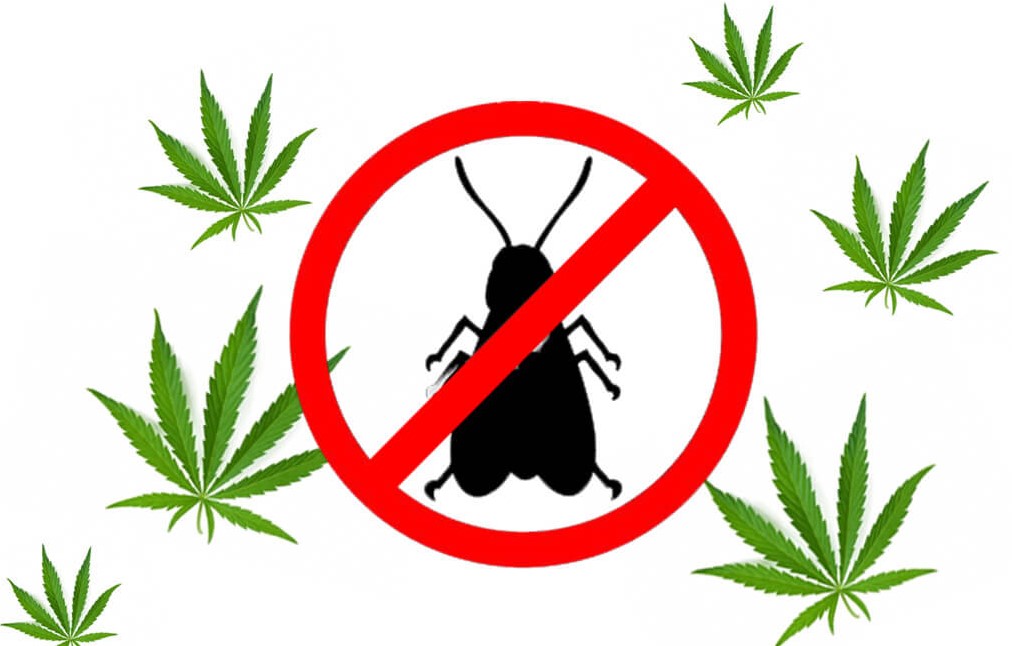Uncategorized
Common Cannabis Pests and How to Mind Them
Pests are a leading problem for cannabis growers. Many plagues can harm our plants, so here are the most frequent, as well as various ways to treat them.
To avoid plants from being damaged by any of these pests, the most essential thing is to prevent them. If we can’t identify which pest is causing us damage, we must target and eliminate it in order for us to control it. To avoid adverse effects that sometimes may be irreversible, prompt action is critical.
There are a number of marijuana diseases and pests that can affect cannabis, including: insects, mites, fungi and viruses.
Insects and mites most common in marijuana pests

1. Whitefly
The whitefly is a yellowish-white insect that typically measures 2mm in length. The species Bemisia Tabaci and Trialeurodes vaporariorum are the most well known subtypes of this poliphagus aleurodide insect.
They grow and reproduce rapidly. You can find them on the underside of leaves, where they lay eggs and live larvae. They eat by sucking sap from plants’ leaves; they also can carry viruses, and their droppings can cause boldface or blush fungus.
The direct damage they cause is caused by the suction of the sap, which causes plant stress and leaf spots (Chlorosis).
In addition, the whitefly can transmit different viruses and molasses from its droppings facilitates the appearance of the bold fungus.
Whitefly Treatment:
- Prevention: This insect, like the cabbage looper, can be deterred with potassium soap or Neem oil or by growing plants that repel it, such as basil or calendula.
- Biological control:Biological control is the process of introducing natural predators into an area in order to combat a specific pest. For example, common whitefly predators include the Encarsia formosa fly, Eretmocerus californicus, Macrolophus caliginosus or Paecilomyces fumosoroseus fungus.
- Laying yellow adhesive strips
- Treatment with organic treatments such as rotenone or pyrethrins can be used, but chemical pesticides are the least desirable and easiest to use in a crisis as a last resort.
2.Red Spider

The red spider, also called Tetranychus urticae and Tetranychus cinnabarinus by scientists, is a mite that commonly attacks indoor plants. If farmers don’t notice the infection in time and take care of it, the plant will die.
It spreads fast in areas with high temperatures, low humidity, and limited ventilation.
The red spider attacks the plant’s sap and hides on the undersides of leaves. The appearance of yellow points in the leaves, followed by yellowing and drying, is characteristic of this syndrome. In severe situations, their webs may be seen surrounding the buds. This disease causes a general weakening of the plant and has a high potential to kill it.
The red spider reproduces rapidly and is therefore difficult to get rid of, making it one of the most troublesome pests.
Treatment against Red Spider:
- You can avoid this problem by keeping the humidity high and the temperature below 26 degrees Celsius during the plant’s growth period. Additionally, you should stay away from fertilizers that have a very high nitrogen content.
- Aphids are a problem for many agricultural crops, and natural predators such as phytoseiulus persimilis, neoseiulus californicus, or Typhlodromus phialatus battle against them.
- Keep in mind that acaricidal products will kill the mites we want to get rid of, as well as any other mites present.
3. Trips

The Frankliniella occidentalis mosquito, for example, is a bug that is one of the most prevalent cannabis pests. Indirect damage caused by serving as a vector and spreading sickness to the plant is the primary concern posed by this pest.
The trip is a small winged insect that feeds on sap. It lives underneath leaves, inside buds, and appears more often in warm temperatures.
The leaves are drawn in to feed on the sap and receive damage as a result. The symptoms they produce include white and silver spots on the leaves, which can be deformed by their assaults and serve as viral carriers. This plague mainly affects indoor crops.
Treatment for Trips:
- Putting blue adhesive traps throughout our crop will enable us to instantly identify trips.
- Biological control of thrips can be achieved by utilizing predators such as Amblyseius barkeri, Amblyseius cucumeris or Amblyseius degenerates.
- Neem oil is effective naturally, this product functions as both a preventative method and also eliminates any preexisting pests.
4. The Aphid

The aphid is a small, plant-feeding insect that can vary in color (black, green or yellow). It lives on the underside of leaves and on stems, sucking out plant sap which then causes leaf loss and yellowing.
Aphids also serve as vectors for various pathogens, including viruses.
They can enter the plant in a short amount of time by rapidly reproducing.
Treatment against Aphid:
- The predators of aphids include Coccinella septempunctata, Aphidoletes aphidimyza, Aphidius ervi, Aphidius colemani, and Chrysoperla carnea, just to name a few.
5. Leaf miner
The larva of this tiny insect, also known as Phyllocnistis citrella, lives within the leaves and creates tunnels that destroy the leaf. The eggs are placed inside the developing leaves, and the larvae are responsible for causing damage.
Treatment for leaf miner:
- Prevention: it can be prevented by using Neem oil.
- Biological control: Insects in the families Eulophidae, Braconidae, Encyrtidae, and Elasmidae are biological predators of leaf miner.
6. Ground fly
The soil fly, also known as a sciarid fly, is a tiny dipterous insect that resides in the soil of indoor crops. It’s a little black fly that eats root hairs and has a significant negative influence on plant roots.
Small flies will readily leave the soil as they move the pots, revealing their presence. They thrive in moist and dark places, not only depleting the root system but also exposing it to pathogens such as Fusarium or Botrytis.
Soil fly treatment:
- Control: Using Neem oil on the plant will stop this pest from developing.
- Biological control: Among the soil fly’s predators are Atheta Coriaria, Hypoaspis miles, and Steinernema feltiae, among others.
7. The Caterpillars
The voracious caterpillars, belonging to the Lepidoptera family, plague outdoor crops.
The butterflies and moths deposit their eggs on the plants, which then hatch into larvae that feed on the leaves and buds.
During bloom, they have a preference for plants, which means that molds and rotting are more common in their infestations.
Treatment against the caterpillars:
- There are various predators we can use to combat the caterpillar plague, such as Coccinella septempunctata or Orius spp. Additionally, other parasites and pathogens can be employed for this purpose.
- One of the most effective ways to control this pest is by using Bacillus thuringiensis, otherwise known as a biological insecticide.
- Compounds can also be used, but only as a last resort.


